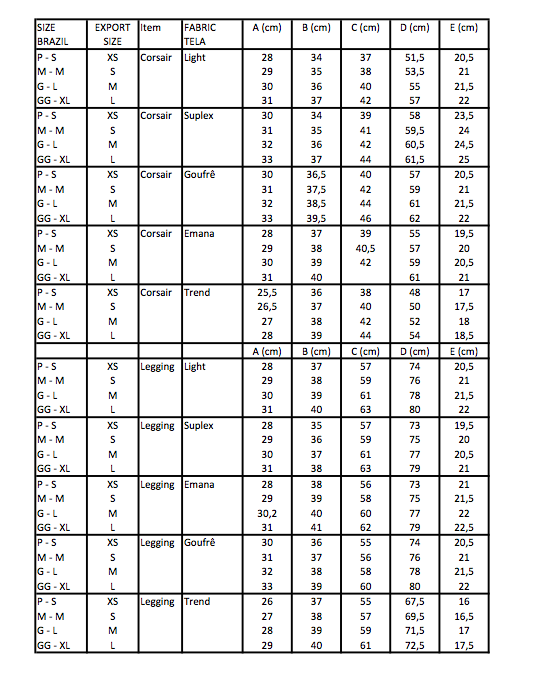Brazil is a country of staggering proportions, encompassing an area of 8.5 million square kilometers, making it the fifth largest country in the world by landmass. As one of the most geographically diverse nations, Brazil stretches across nearly half of the South American continent, offering a wide array of landscapes, climates, and ecosystems. Its sheer size contributes significantly to its global importance, both environmentally and economically.
From the lush Amazon rainforest in the north to the fertile plains of the south, Brazil's size is not just a geographical fact but a defining characteristic that shapes its culture, economy, and global influence. Understanding the dimensions of this colossal nation provides insight into its role on the world stage and the challenges it faces in managing such an expansive territory.
In this article, we will delve into the size of Brazil, exploring its geographical features, ecological significance, economic implications, and the challenges associated with governing such a vast country. By the end, you'll have a comprehensive understanding of what makes Brazil's size so remarkable.
Table of Contents
- Geographical Overview
- Comparison to Other Countries
- Diverse Landscapes
- Environmental Impact
- Economic Significance
- Challenges of Size
- Population Distribution
- Transportation Infrastructure
- Political Implications
- Future Perspectives
Geographical Overview of Brazil
As the largest country in South America, Brazil occupies nearly 47.3% of the continent's total land area. Its official area is approximately 8,515,767 square kilometers, which places it behind only Russia, Canada, China, and the United States in terms of landmass. The country stretches from the equator to the Tropic of Capricorn, encompassing a wide variety of climates and ecosystems.
Geographically, Brazil is bordered by every South American country except Ecuador and Chile. Its coastline spans over 7,367 kilometers along the Atlantic Ocean, making it a significant maritime power. The Amazon River, which flows through the northern part of the country, is the largest river in the world by volume of water discharged.
Comparison to Other Countries
To put Brazil's size into perspective, it is larger than the entire continent of Europe combined, excluding Russia. If you compare it to the United States, Brazil is roughly equivalent in size to the lower 48 states. This comparison highlights the enormity of Brazil's territory and its potential for resource development and biodiversity.
Moreover, Brazil's landmass is so vast that it could comfortably fit several smaller countries within its borders. For instance, the entire United Kingdom could fit into Brazil more than 30 times. This comparison underscores the challenges and opportunities that come with managing such an expansive territory.
Diverse Landscapes Across Brazil
Brazil's size contributes to its incredible diversity of landscapes, ranging from dense rainforests to expansive savannas, rugged mountains, and coastal plains. The Amazon rainforest, which covers roughly 60% of Brazil's territory, is the world's largest tropical rainforest and serves as a critical carbon sink for the planet.
In addition to the Amazon, Brazil is home to the Cerrado, a vast tropical savanna ecoregion that covers approximately 20% of the country. The Pantanal, located in the central-west region, is the world's largest tropical wetland and supports an extraordinary array of wildlife. The Atlantic Forest, stretching along the eastern coast, is one of the most biodiverse forests in the world, despite facing significant deforestation pressures.
Environmental Impact of Brazil's Size
Brazil's enormous size plays a crucial role in global environmental dynamics. The Amazon rainforest, often referred to as the "lungs of the planet," produces approximately 20% of the world's oxygen and acts as a significant carbon sink. However, deforestation and illegal logging pose significant threats to this vital ecosystem.
According to the World Wildlife Fund (WWF), Brazil is home to approximately 60% of the Amazon rainforest, which is under constant threat from agricultural expansion, mining, and infrastructure development. The Brazilian government has implemented various policies to combat deforestation, but enforcement remains a challenge due to the country's vastness and limited resources.
Economic Significance of Brazil's Size
The size of Brazil has profound economic implications, providing the country with abundant natural resources and opportunities for development. Brazil is one of the world's leading producers of agricultural commodities, including soybeans, coffee, and sugarcane. The vast expanses of arable land, combined with favorable climate conditions, make Brazil a powerhouse in the global agricultural market.
Additionally, Brazil's mineral wealth, including iron ore, gold, and other precious metals, contributes significantly to its economy. The country is also a major player in the energy sector, with significant investments in hydroelectric power and renewable energy sources.
Challenges of Governing a Vast Territory
Governing a country as large as Brazil presents unique challenges. The sheer size of the nation makes it difficult to implement uniform policies and ensure effective governance across all regions. Infrastructure development, healthcare, education, and security are all areas where the government faces significant hurdles due to the country's vastness.
Furthermore, the remoteness of some regions, particularly in the Amazon, makes it challenging to provide essential services and enforce laws. This has led to issues such as illegal logging, mining, and land grabbing, which exacerbate environmental degradation and social inequality.
Population Distribution in Brazil
Despite its immense size, Brazil's population is concentrated in specific regions, primarily along the coast and in major urban centers. The southeastern region, which includes cities like São Paulo and Rio de Janeiro, is home to the majority of Brazil's population. This uneven distribution creates challenges in terms of resource allocation and infrastructure development.
According to the Brazilian Institute of Geography and Statistics (IBGE), approximately 84% of Brazil's population resides in urban areas. This urbanization trend has led to the growth of megacities, which face issues such as traffic congestion, pollution, and housing shortages.
Transportation Infrastructure Across Brazil
Building and maintaining an effective transportation infrastructure in a country as large as Brazil is a monumental task. The country relies heavily on road networks, with approximately 1.7 million kilometers of roads, of which only 215,000 kilometers are paved. Railroads and waterways also play a crucial role in transporting goods across the vast territory.
However, the underdevelopment of transportation infrastructure in some regions hampers economic growth and connectivity. The government has initiated various projects to improve infrastructure, but progress has been slow due to financial constraints and bureaucratic challenges.
Political Implications of Brazil's Size
The size of Brazil has significant political implications, both domestically and internationally. Domestically, the country's vastness requires a decentralized approach to governance, with states and municipalities having considerable autonomy. This decentralization can lead to disparities in development and service delivery across different regions.
Internationally, Brazil's size and natural resources make it a key player in global environmental and economic discussions. The country's role in climate change negotiations, particularly regarding the preservation of the Amazon rainforest, highlights its importance on the world stage. However, balancing economic development with environmental protection remains a delicate challenge for Brazilian policymakers.
Future Perspectives for Brazil's Development
Looking ahead, Brazil's size presents both opportunities and challenges for its future development. The country has the potential to become a global leader in sustainable development, leveraging its vast natural resources and biodiversity for economic growth while prioritizing environmental conservation.
Investments in technology, infrastructure, and education will be crucial in ensuring that Brazil can effectively manage its vast territory and address the challenges associated with its size. Additionally, fostering international partnerships and cooperation will be essential in tackling global issues such as climate change and biodiversity loss.
Kesimpulan
In conclusion, the size of Brazil is a defining characteristic that shapes its geography, economy, environment, and politics. From its vast Amazon rainforest to its bustling urban centers, Brazil's immense territory offers a wealth of opportunities and challenges. Understanding the dimensions of this colossal nation is essential for appreciating its global significance and the complexities of governing such a vast country.
We invite you to share your thoughts and insights in the comments section below. Additionally, feel free to explore other articles on our website for more in-depth information about Brazil and other fascinating topics. Together, let's continue the conversation about the incredible dimensions of Brazil's size and its implications for the world.
Data and statistics used in this article are sourced from reputable organizations such as the World Wildlife Fund (WWF), Brazilian Institute of Geography and Statistics (IBGE), and other authoritative publications. For further reading, consider exploring the references linked throughout the article.



Detail Author:
- Name : Jarod Hahn MD
- Username : trutherford
- Email : ubailey@hotmail.com
- Birthdate : 1971-03-18
- Address : 42986 Yadira Mill Oberbrunnermouth, CT 52780
- Phone : +1-508-546-3649
- Company : Gibson LLC
- Job : Diesel Engine Specialist
- Bio : Nam culpa nobis consequatur nesciunt asperiores et exercitationem. Commodi optio quo veritatis ratione pariatur cum rem. Labore dolor est quia excepturi voluptas a.
Socials
twitter:
- url : https://twitter.com/gtorp
- username : gtorp
- bio : Ea ut nulla ipsa et. Sequi qui aperiam qui sequi at voluptatibus inventore. Quidem beatae quisquam et repudiandae odio sapiente.
- followers : 5239
- following : 775
instagram:
- url : https://instagram.com/torp2015
- username : torp2015
- bio : Tempore sunt voluptas rerum omnis animi officia. Impedit asperiores unde magni ut.
- followers : 5125
- following : 725
tiktok:
- url : https://tiktok.com/@genesis.torp
- username : genesis.torp
- bio : Aut omnis amet reiciendis ad velit quia excepturi.
- followers : 4612
- following : 2913
facebook:
- url : https://facebook.com/genesis.torp
- username : genesis.torp
- bio : Blanditiis expedita illo deserunt. Veritatis aut dicta non ad id.
- followers : 5455
- following : 974
linkedin:
- url : https://linkedin.com/in/genesis_torp
- username : genesis_torp
- bio : Incidunt illo aspernatur illo voluptas vel sunt.
- followers : 3018
- following : 2327



























